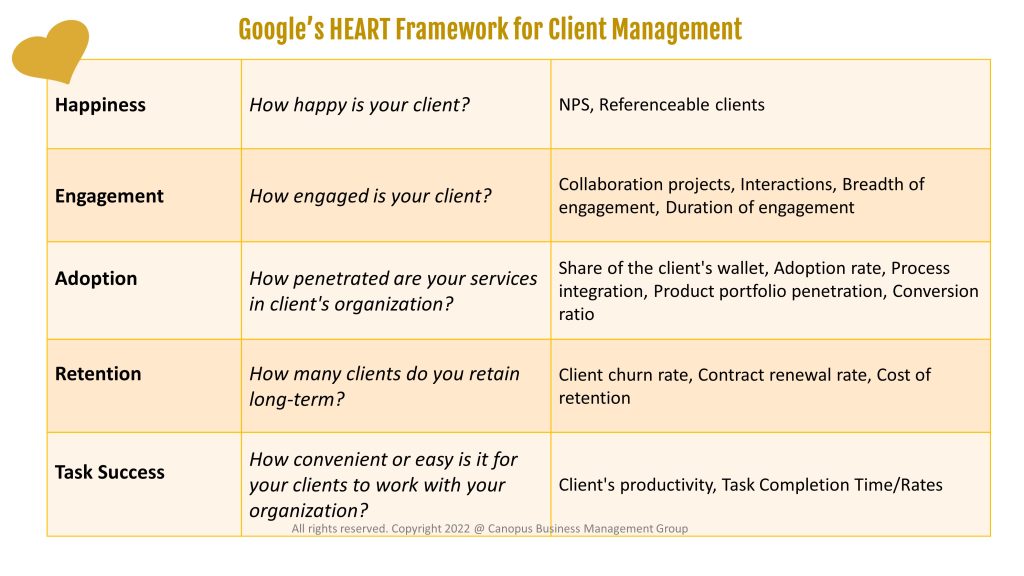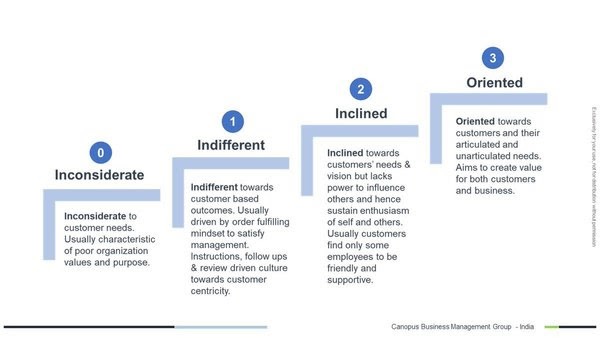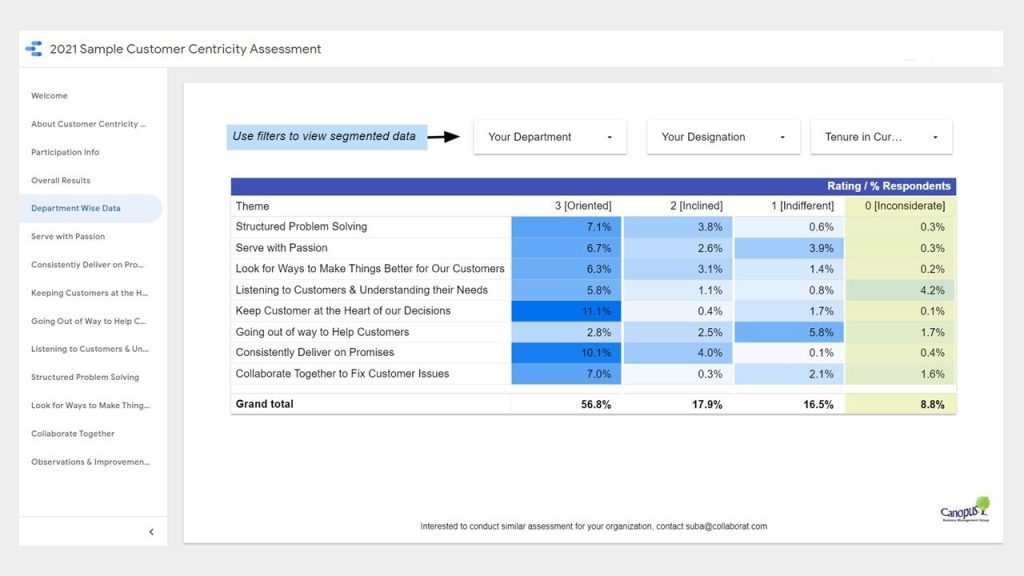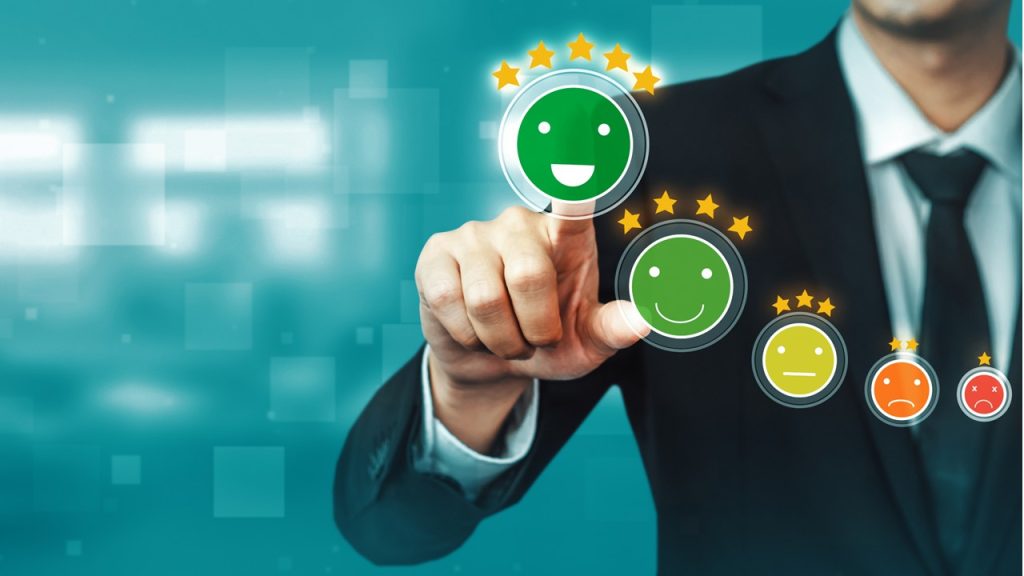
Leaders in B2B organizations can take several steps to improve low EBITDA margins, including:
Conduct a Cost Analysis: Leaders should conduct a thorough analysis of the organization’s costs to identify areas where they can be reduced. This may involve streamlining processes, reducing waste, and rethinking approaches to procurement and inventory management.
Review Pricing Strategies: Leaders should review their pricing strategies to ensure that they are in line with market conditions and reflect the true value of their products and services. This may involve adjusting prices, implementing dynamic pricing strategies, or finding new revenue streams.
Invest in Technology and Innovation: Leaders should invest in technology and innovation to improve efficiency and reduce costs. This may involve implementing new software systems, automating processes, or developing new products and services that can help the organization stay ahead of the competition.
Build a Strong Sales Team: Leaders should invest in building a strong sales team that can effectively sell the organization’s products and services. This may involve hiring new salespeople, providing sales training, or reorganizing the sales team to optimize performance.
Foster a Culture of Continuous Improvement: Leaders should foster a culture of continuous improvement, encouraging employees to identify and implement new ways to reduce costs and increase efficiency. This may involve regularly reviewing and adjusting processes, setting performance targets, and providing recognition and incentives for improvements.
Collaborate with Partners: Leaders should collaborate with partners, suppliers, and customers to identify opportunities for joint cost savings and revenue growth. This may involve sharing information and resources, developing joint ventures, or forming strategic alliances.
In conclusion, improving low EBITDA margins in B2B organizations requires a combination of strategic planning, investment in technology and innovation, and a commitment to continuous improvement. By taking these steps, leaders can position their organizations for long-term success and profitability.
#nilakantasrinivasan-j #canopus-business-management-group #B2B-client-centric-growth

To improve EBITDA margins in B2B companies, employees should develop the following skills and capabilities:
- Cost Analysis: Employees should have the skills and knowledge to analyze costs and identify areas where they can be reduced. This may involve using data analytics, process mapping, and other techniques to identify inefficiencies and opportunities for cost savings.
- Pricing Strategy: Employees should have a strong understanding of pricing strategies, including how to set prices based on market conditions, customer demand, and the organization’s cost structure.
- Technology and Innovation: Employees should have the ability to stay up-to-date with the latest technologies and trends, and be able to identify opportunities for using technology to improve efficiency and reduce costs.
- Sales and Marketing: Employees involved in sales and marketing should have a deep understanding of the products and services they are selling, as well as the needs and motivations of customers. This knowledge can be leveraged to develop effective sales strategies and increase revenue.
- Continuous Improvement: Employees should have a strong commitment to continuous improvement and be able to identify and implement new ways to increase efficiency and reduce costs. This may involve using data analytics, process improvement methodologies, or other techniques to identify and resolve issues.
- Collaboration and Partnership Building: Employees should have the ability to collaborate effectively with partners, suppliers, and customers to identify opportunities for joint cost savings and revenue growth. This may involve negotiating favorable terms, sharing information and resources, or developing new business models.
In conclusion, developing these skills and capabilities in employees can help B2B organizations improve their EBITDA margins by reducing costs, increasing efficiency, and growing revenue. This can be achieved through a combination of training, coaching, and development programs, as well as a strong focus on continuous improvement and collaboration.
#nilakantasrinivasan-j #canopus-business-management-group #B2B-client-centric-growth

Client centricity plays an important role in improving low EBITDA margins in the B2B sector. When organizations focus on their clients and put their needs at the center of their business strategies, they are able to increase customer satisfaction, improve client retention, and drive revenue growth. This, in turn, can lead to improved EBITDA margins.
Here are some ways in which client centricity can help improve low EBITDA margins in B2B organizations:
- Increased Customer Satisfaction: By putting the needs of their clients first, organizations can increase customer satisfaction and build stronger, more meaningful relationships with their clients. This can result in increased client retention and reduced churn, which can lead to improved EBITDA margins.
- Better Understanding of Customer Needs: When organizations focus on their clients, they gain a deeper understanding of their needs, preferences, and pain points. This knowledge can be used to inform product and service development, as well as pricing and sales strategies, leading to increased revenue and improved margins.
- Improved Client Retention: Client centricity can help organizations build stronger relationships with their clients, leading to improved client retention. When clients are satisfied with the products and services they receive, they are less likely to switch to competitors, which can result in improved EBITDA margins.
- Increased Revenue: By focusing on their clients, organizations can increase their ability to sell more products and services, and drive revenue growth. This, in turn, can improve EBITDA margins by increasing the top-line while reducing costs.
Free Download
Download free customer experience self-assessment check sheet that is useful before commencing client centricity journey in your organization.
This self-assessment check-sheet will help you to quickly evaluate your Customer Experience program and learn about areas that need improvement. This is a qualitative assessment. Hence you should take an unbiased view during evaluation. There are 2 parts in this assessment. First contains 16 questions and you can evaluate where your organization stands in each of those areas. Second part contains, ideally expected responses which can be used for comparison.

In conclusion, client centricity is an essential component of improving low EBITDA margins in the B2B sector. By putting the needs of their clients first and building strong, meaningful relationships, organizations can increase customer satisfaction, improve client retention, and drive revenue growth, leading to improved EBITDA margins.
#nilakantasrinivasan-j #canopus-business-management-group #B2B-client-centric-growth

Agile enterprises are customer centric because they prioritize the needs and goals of their customers in all aspects of their business. Agile methodologies, such as Scrum and Kanban, are designed to be flexible and responsive to change, which allows organizations to quickly adapt to the evolving needs of their customers.
In an agile enterprise, customer feedback is actively sought and incorporated into product development and decision-making processes. This allows the enterprise to continuously improve and deliver products and services that align with customer needs.
Additionally, Agile enterprises also tend to have a flat organizational structure, which allows for better communication and collaboration across teams and departments, enabling them to respond more quickly to customer needs. They also tend to use cross-functional teams, which are composed of individuals from different areas of the business, such as design, development, and marketing, to work together to deliver products and services that meet customer needs.
In summary, Agile enterprises are customer centric because they prioritize the needs of their customers, actively incorporate customer feedback, and continuously improve their products and services to meet those needs.
One example of how agility helped in client centricity is the case study of a large retail bank that implemented an Agile approach to managing their customer service operations.
The bank was facing a significant challenge in maintaining high levels of customer satisfaction, as their traditional, hierarchical structure was causing delays in responding to customer complaints and requests. Additionally, the bank was facing increased competition from fintech companies that were more agile and able to respond quickly to changing customer needs.
To address these issues, the bank decided to adopt an Agile approach to managing their customer service operations. They formed cross-functional teams composed of representatives from different areas of the business, such as customer service, IT, and compliance, and implemented daily stand-up meetings to ensure that everyone was aware of the most pressing customer issues.
The bank also began actively seeking customer feedback and incorporating it into their decision-making processes. They also implemented a system for tracking customer complaints and requests in real-time, which allowed them to quickly address and resolve issues.
As a result of these changes, the bank was able to significantly improve their customer satisfaction levels and reduce their customer complaint resolution time. The agility helped them respond to the changing customer needs in a timely manner. Additionally, the bank was also able to reduce costs and improve overall efficiency, which helped them better compete with fintech companies.
This case study shows how agility helped in client centricity by allowing the bank to respond more quickly to customer needs, improve customer satisfaction, and ultimately increase competitiveness.
One example of agile client centricity in a startup is the case study of a small software development company that specializes in building custom mobile apps for small businesses.
The company had struggled to retain clients in the past because they were not able to deliver products that met the unique needs of each business. The company decided to adopt an Agile approach to software development, which allowed them to be more flexible and responsive to the evolving needs of their clients.
The company began using Scrum, an Agile methodology, to manage their software development projects. They formed small, cross-functional teams composed of developers, designers, and project managers, and held daily stand-up meetings to ensure that everyone was aware of the most pressing client needs.
The company also began actively seeking client feedback and incorporating it into their development process. They implemented a system for tracking client requests and issues in real-time, which allowed them to quickly address and resolve problems.
As a result of these changes, the company was able to significantly improve their client retention rate. Clients were happy with the product as it met their needs and the company was able to deliver the product on time and on budget. Additionally, the company was able to reduce costs and improve overall efficiency, which helped them to better compete with larger software development companies.
This case study shows how agility helped in client centricity by allowing the company to respond more quickly to client needs, improve client satisfaction and ultimately increase competitiveness.
Here are a few simple ways to start incorporating Agile principles in a non-software environment:
- Start with small, cross-functional teams: Form teams that include representatives from different areas of the business, such as sales, marketing, and operations. This will ensure that everyone is aware of the most pressing customer needs and can work together to deliver solutions.
- Hold regular meetings: Hold daily or weekly meetings to discuss progress, identify any roadblocks, and ensure that everyone is on the same page.
- Prioritize customer feedback: Actively seek and incorporate customer feedback into decision-making processes. This will help ensure that products and services align with customer needs.
- Emphasize flexibility and adaptability: Be open to change and willing to pivot when necessary. Agile is all about being able to respond quickly to changing circumstances.
- Use visual management tools: Use visual tools, such as Kanban boards or task lists, to track progress and identify areas for improvement.
- Encourage collaboration and communication: Encourage open communication and collaboration across teams and departments.
- Test and Iterate: Continuously test and improve the process, gather feedback, and iterate.
It is important to note that Agile is a mindset and a set of principles, not a one size fit all methodology. Therefore, it’s important to tailor the approach to the specific needs of the organization and its environment.
#nilakantasrinivasan-j #canopus-business-management-group #B2B-client-centric-growth #Agile #Customer-centric

Putting Google’s HEART framework to build your Client Centricity Program
A decade ago, Google’s researchers, Kerry Rodden, Hilary Hutchinson, and Xin Fu, published a paper on how to measure the UX of web applications. Their principal objective was to clarify how product goals can be mapped to metrics in order to improve the customer experience. This was the genesis of Google’s HEART framework.
Since then, this has gained popularity among product managers (PMs) and IT companies building products or applications. They use the HEART framework to improve UX. But I’m not going to talk about it in that context. Let’s take a step back and look at this HEART framework from the perspective of any business, and how we can use it to build client centricity.

What is Google’s HEART Framework?
HEART is an acronym for Happiness, Engagement, Adoption, Retention and Task. These are the five broad themes or lenses through which the success of client centricity and client management frameworks can be examined.
Happiness
How happy is your client? How happy are the decision-makers? How happy is the buyer of your service? How happy are the users of your services? How happy are the influencers?
While NPS is still a popular way to measure satisfaction, you can certainly explore other ways to collect quantitative data around satisfaction, for instance through referenceable clients.
Engagement
How engaged is your client in the short term? How much do users interact with a product or service?
We need to recognize that not all engaged clients are happy. For example, if they are reliant on your organization and you are failing to meet their expectations, their engagement with your organization will be high! They will have multiple reviews, too many reports, frequent visits to your site, etc.
Thus, measuring engagement alone can be misleading.
Engagement can also increase when you offer a wider range of products or services or multiple value additions. Mapping the client journey (CJM) can be helpful to improve positive engagement.
Relevant metrics would be collaboration projects, number of interactions, breadth of engagement (across different departments of the client’s organization), duration of such engagements, etc.
Adoption (Penetration)
How penetrated are your services in client’s organization? What is your share of wallet of the client’s business? How much are your existing clients willing to use your products, services, or applications? Are they regularly using it? Is it out of pressure or because they find it useful?
Relevant metrics can be the share of the client’s wallet, the adoption rate of your services, the adoption rate of new features, services, value adds, processes, integration between the client and your processes, the product ranges of clients where your services or products are used, the conversion ratio of sales, etc.
Retention
How many clients do you retain long-term?
Relevant metrics include client churn rate, contract renewal rate, cost of retention (discounts towards retention), etc.
Task
How convenient or easy is it for your clients to work with your organization? How complicated are the processes and policies? How agile is your work force’s mindset?
Prof. Clay Christensen introduced the concept of ‘Jobs-to-be-done’, where he stated that all clients and customers have jobs to be done, and it is about how we, as vendors, can make their lives easy. And clients (and their employees) would prefer those products or services that make their lives easier.
For example, your client wants you to change a design parameter for some specific reason, but your employees don’t easily accept the change. Instead, they resist, highlight difficulties, propose complicated solutions, put clients in bureaucratic loops, etc.
Metrics can be improvement in a client’s productivity (after your association), time to complete their tasks in your touchpoints, channels, or systems, etc.
I hope, by now, you can see the benefit of viewing your client centricity and client success program through Google’s HEART framework. If you are looking for any specific guidance in this area, please do contact me at Business.Support@collaborat.com
#nilakantasrinivasan-j #canopus-business-management-group #B2B-client-centric-growth #Google #HEART-Framework

Behavioral and cultural maturity on Customer Centricity with maturity grid..
An unique attitude based organizational evaluation is used to understand behavioral and cultural maturity and can provide insights on where and what kind of attention is needed from leadership to improve Customer Centricity. Instead of dispersed efforts, they can take focused actions.
An overall maturity rating for the organization or cohort of employees will quantitatively assess current state.
A maturity grid below can give relative position and also provide a benchmark.
Customer Centricity Maturity Levels

To arrive at this maturity level:
- Customer Centricity of an organization across 8 dimensions is assessed and outcome will be an overall Customer Centricity Score against 4 maturity levels.
- Unlike traditional assessments, in this survey participants’ attitude is evaluated by giving them 8 random scenarios and they have to select what they will do or feel in each of the situation. This way, it eliminates respondent bias.
- Outcome is compiled in an interactive Customer Centricity report – a dashboard
Access Customer Centricity Maturity Interactive Dashboard here

For organizations of employee headcount (20 – 80) this Customer Centricity Evaluation is free.
#nilakantasrinivasan-j #canopus-business-management-group #B2B-client-centric-growth #Customer-Centricity-Evaluation

Inspiration is contagious like COVID!
I’m an artist at living – my work of art is my life.
– Suzuki
Be passionate about designing customer experience. Take personal interest in finer details of your product/service, even if its too insignificant for your role.
| If a picture is worth 1000 words, a prototype is worth 1000 meetings. |
| – Tom & David Kelley |
It’s best to create a culture to experiment, test & pilot the hypothesis rather than deliberation, debate & finalize!
| Mind is never a problem, mindset is. |
| – Narendra Modi |
All employees are good, any mind-block that makes someone pro or anti to a change is due to lack of clarity. Communicate beyond barriers to build strong bridges and change mindsets.
| The more you engage with customers the clearer things become and the easier it is to determine what you should be doing. |
| – John Russell |
| Set it as your personal target to interact with at least 1 customer everyday, even if it is in an informal manner. |
| _____________________________________________________ |
| A little rain each day will fill the rivers to overflowing. |
| – Liberian Proverb |
| Leaders need to repeatedly and regularly connect with employees to emphasize the importance of customer experience. It’s not a one time fan fair event. |
| _____________________________________________________ |
| The customer is not always right, but they are always your customer! |
| – Shep Hyken |
| It doesn’t matter who’s right, any way. Not all customers will fit into ideal customer profile. This agile mindset is the starting point for customer delight. |
| _____________________________________________________ |
| Don’t confuse customers who are to your company with customers who are loyal to your loyalty program. |
| – Sky |
| Not all customers are loyal. Don’t get misled by rewards redemptions and impressions rates to gage customer engagement. |
| _____________________________________________________ |
| Use your good judgment in all situations. There will be no additional rules. |
| – Nordstrom’s employee manual |
| Processes, control measures, audits & automations should empower your employees to serve customers better and not meant to turn employees into robots that follow rule & script books. |
#nilakantasrinivasan-j #canopus-business-management-group #B2B-client-centric-growth #Customer-Experience #Leadership-quotes
Customer Experience Quotes
Here is one of the most inspiring Customer experience quotes to delight customers and customer retention.Do not be in a hurry to tie what you cannot untie.
– English Proverb
Take away for CX Professionals
Overpromising is a bad strategy when it comes to customer retention.
Author is an expert in customer retention. If you are looking for Customer Experience (CX) firm in Chennai, Bangalore, Mumbai, Delhi and across India, contact us.
Customer Experience Quotes
Here is one of the most inspiring Customer experience quotes to delight customers and customer retention.Welcome the coming, speed the parting guest.
– Homer
Take away for CX Professionals
It’s good news when some customers leave you.
Author is an expert in customer retention. If you are looking for Customer Experience (CX) firm in Chennai, Bangalore, Mumbai, Delhi and across India, contact us.
Customer Experience Quotes
Here is one of the most inspiring Customer experience quotes to delight customers and customer retention.All looks yellow to the jaundiced eye.
– Alexander Pope
Take away for CX Professionals
Introspection is an effective tool to arrest customer churn.
Author is an expert in customer retention. If you are looking for Customer Experience (CX) firm in Chennai, Bangalore, Mumbai, Delhi and across India, contact us.
Customer Experience Quotes
Here is one of the most inspiring Customer experience quotes to delight customers and customer retention.Never make a threat. Reason with people.
– Mario Puzo, The Godfather
Take away for CX Professionals
Never, ever use coercion to retain customers.
Author is an expert in customer retention. If you are looking for Customer Experience (CX) firm in Chennai, Bangalore, Mumbai, Delhi and across India, contact us.
Customer Experience Quotes
Here is one of the most inspiring Customer experience quotes to delight customers and customer retention.You cannot shake hands with a clenched fist.
– Indira Gandhi
Take away for CX Professionals
Never snab a customer in despair.
Author is an expert in customer retention. If you are looking for Customer Experience (CX) firm in Chennai, Bangalore, Mumbai, Delhi and across India, contact us.
Sign-up for collaborat newsletter
